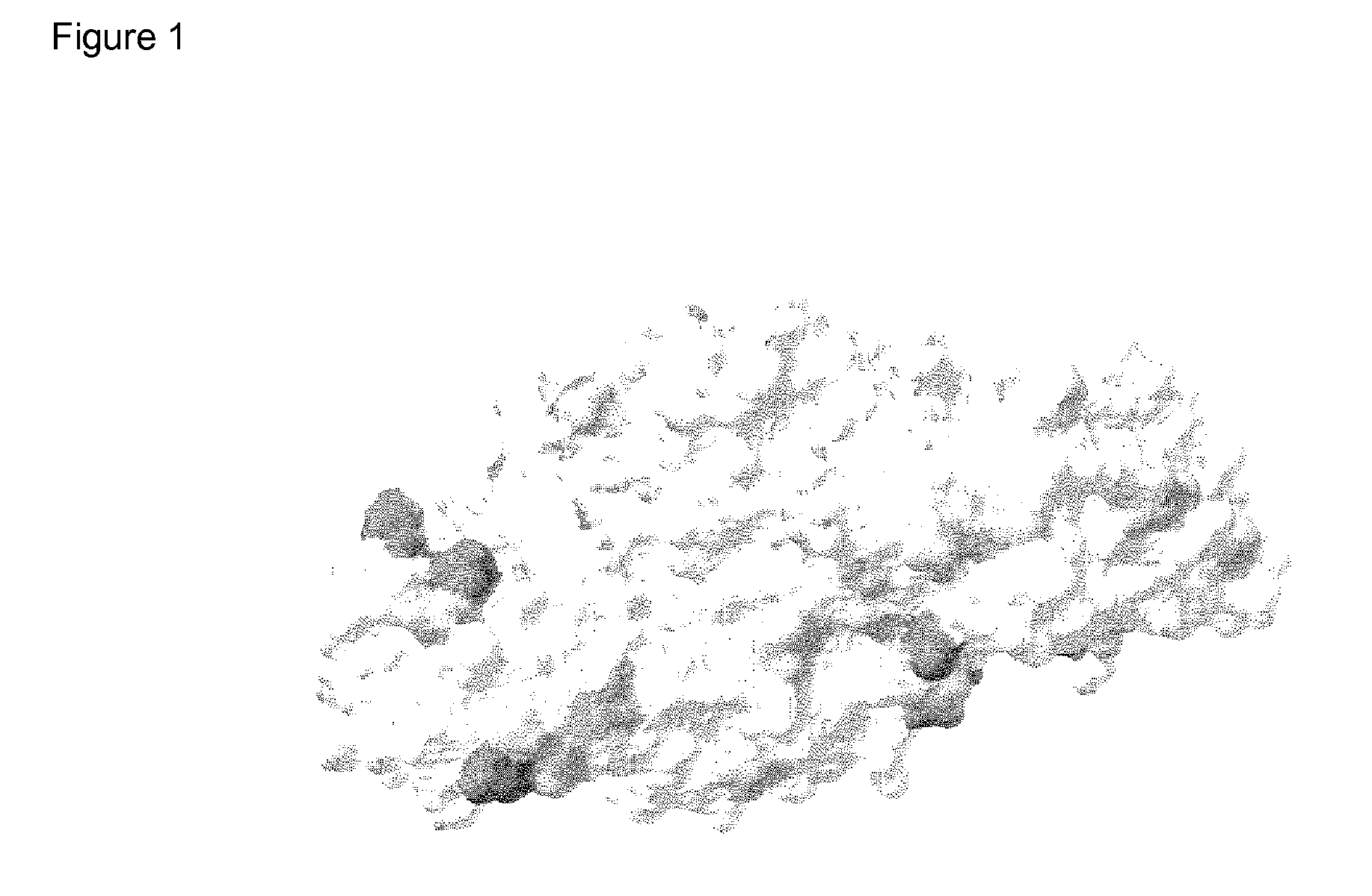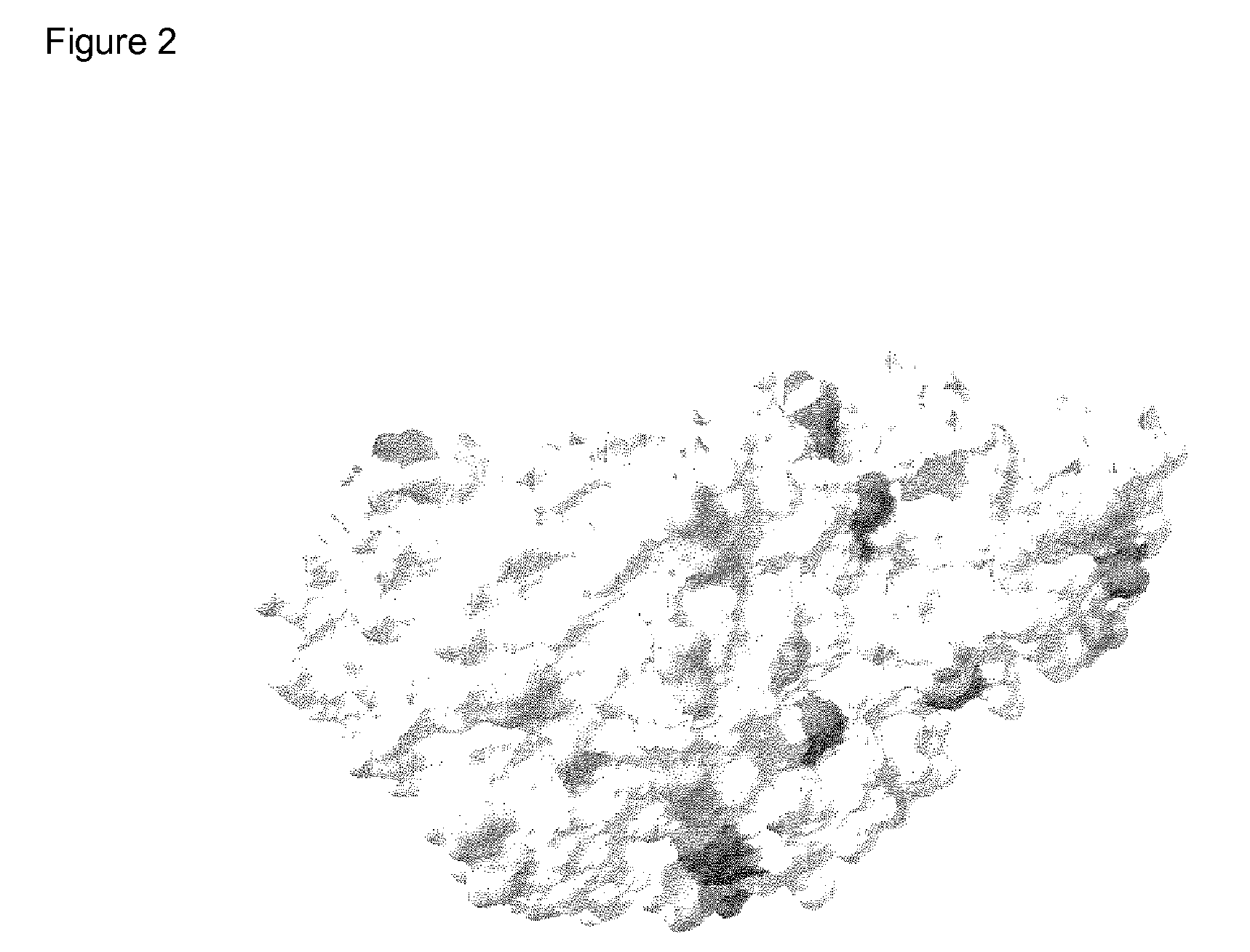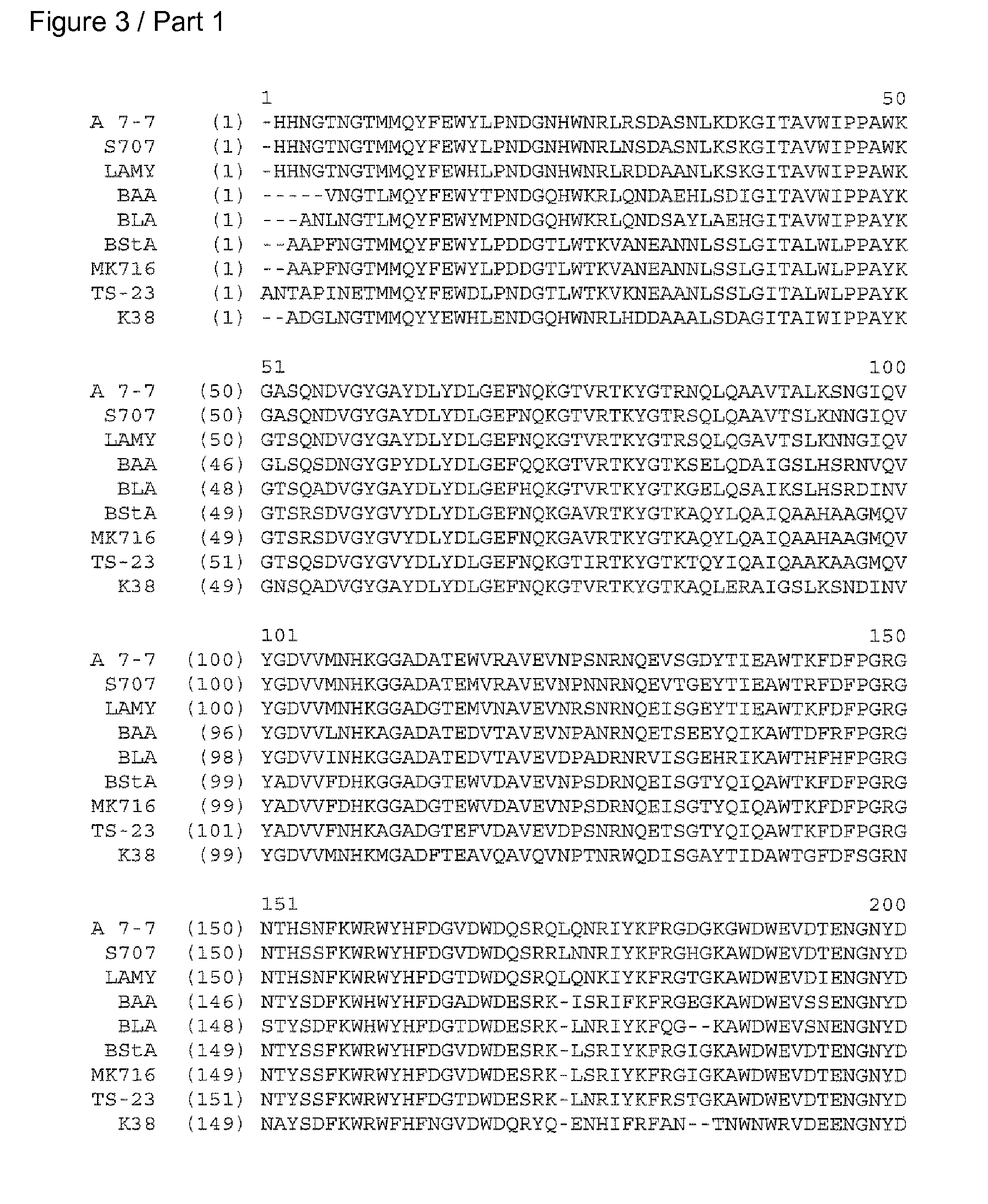Alpha-amylase variants having an elevated solvent stability, method for the production thereof and detergents and cleansers containing these alpha-amylase variants
a technology of alpha-amylase and solvent stability, applied in the field of alpha-amylase variants, can solve the problems of marked instability, loss of activity, loss of activity, etc., and achieve the effect of increasing instability
- Summary
- Abstract
- Description
- Claims
- Application Information
AI Technical Summary
Benefits of technology
Problems solved by technology
Method used
Image
Examples
example 1
Culturing of Bacillus sp. A 7-7 (DSM 12368)
[0338]The microorganism Bacillus sp. A 7-7 has been deposited under the deposit number DSM 12368 with the Deutsche Sammlung von Mikroorganismen and Zellkulturen GmbH, Mascheroder Weg 1b, 38124 Braunschweig, Germany. It is described in the application WO 02 / 10356 A2. The DNA and amino acid sequences of the α-amylase produced by this (deposited) species differ from the sequences depicted in the sequence listing of WO 02 / 10356 A2 in the following two positions: the corresponding DNA has, in nucleic acid positions 805-807 according to SEQ ID NO. 1 of the present application, the triplet gat which codes for the amino acid D (in amino acid position 236), and, in positions 1156-1158, the triplet tat which codes for the amino acid Y (in position 353). (SEQ ID NO. 1 and 2 of WO 02 / 10356 A2 indicate the triplets ggt for G and tgt for C, respectively, at the corresponding positions.)
[0339]Using well-known methods of point mutagenesis, for example with...
example 2
Homology Modeling and Selection of the Amino Acids Replaceable According to the Invention
Homology Modeling
[0341]Homology modeling for Bacillus sp. A 7-7 (DSM 12368) α-amylase was carried out via the RSCB protein database (accessible via Max-Delbrück-Zentrum in Berlin, Germany), as illustrated in the description. In this connection, the search using the protein sequence detected the following structures: B. licheniformis α-amylase (RCSB-PDB database entry: 1 BLI), a chimeric α-amylase of those of B. amyloliquefaciens and B. licheniformis, in its native structure (1E3X, 1E43), an acarbose complex of the same chimeric α-amylase (1E3Z), a Tris / maltotriose complex of the same chimeric α-amylase (1E40) and a kinetically stabilized variant of B. licheniformis α-amylase (1OB0).
[0342]By superimposing these structure in the SwissPDB viewer, a leader structure was generated onto which the protein sequence of ALBA was then modeled. The orientation of the side chains in the ALBA structure was th...
example 3
Site-specific Mutagenesis
[0363]For Bacillus sp. A 7-7 (DSM 12368) α-amylase, the positions determined in the previous example serve as starting points for point mutations via site-directed mutagenesis, i.e. for introducing a different amino acid to the position(s) in question. Said mutagenesis is carried out, for example, with the aid of the QuikChange kit (Stratagene, cat. No. 200518) according to the corresponding protocol. The primers may be designed on the basis of the DNA and amino acid sequences indicated in SEQ ID NO. 1, the particular codon being altered according to the amino acid to be introduced.
[0364]According to this principle, an expression vector containing the α-amylase sequence is suitably mutagenized accordingly and transformed into an expression strain in the present example into B. subtilis, by well-known methods.
PUM
| Property | Measurement | Unit |
|---|---|---|
| temperatures | aaaaa | aaaaa |
| temperatures | aaaaa | aaaaa |
| temperatures | aaaaa | aaaaa |
Abstract
Description
Claims
Application Information
 Login to View More
Login to View More - R&D
- Intellectual Property
- Life Sciences
- Materials
- Tech Scout
- Unparalleled Data Quality
- Higher Quality Content
- 60% Fewer Hallucinations
Browse by: Latest US Patents, China's latest patents, Technical Efficacy Thesaurus, Application Domain, Technology Topic, Popular Technical Reports.
© 2025 PatSnap. All rights reserved.Legal|Privacy policy|Modern Slavery Act Transparency Statement|Sitemap|About US| Contact US: help@patsnap.com



